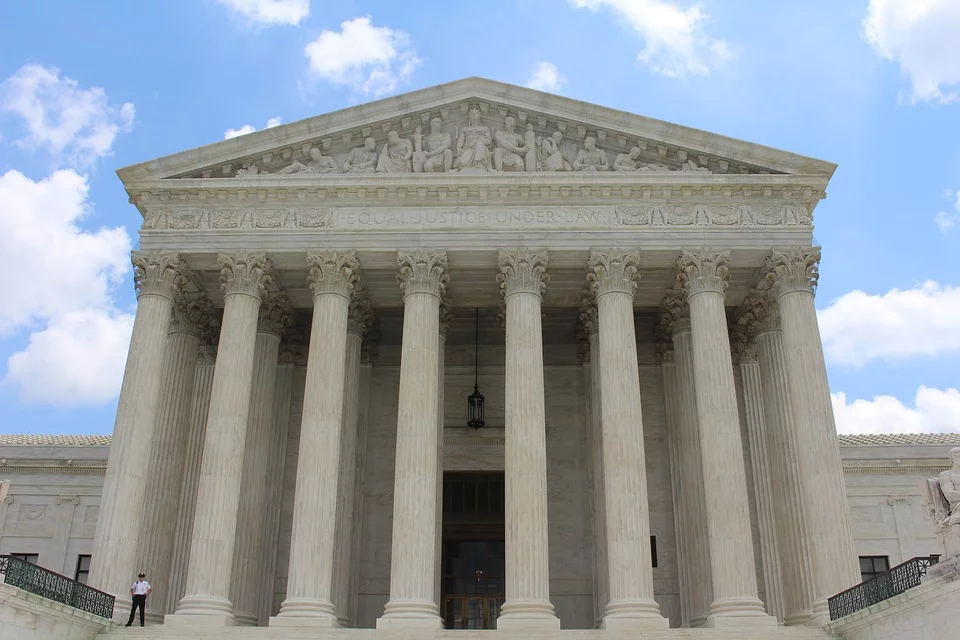
![]() 2019 was a big year for mass torts that brought several massive verdicts against big name defendants like Johnson & Johnson and Monsanto. It’s likely this momentum will carry over into the New Year so here are 4 litigations to follow in 2020.
2019 was a big year for mass torts that brought several massive verdicts against big name defendants like Johnson & Johnson and Monsanto. It’s likely this momentum will carry over into the New Year so here are 4 litigations to follow in 2020.
1) Juul
Popular e-cigarette product Juul has made headlines for the past several years, first for its “Make the Switch” marketing campaign, and for subsequent reports on the adverse effects of e-cigarette use and vaping on users’ health. On October 2, 2019 the Judicial Panel on Multidistrict Litigation (“JPML”) issued an order consolidating ten suits filed in federal courts across the country against common defendant Juul Labs, Inc., and transferring the actions to U.S. District Court for the Northern District of California under Judge William Orrick. The JPML further stated in the order that in addition to the initial suits included in the MDL, it was aware of more than 40 suits that could potentially be related.
Plaintiffs in the Juul litigation cases all similarly allege that defendant Juul Labs Inc. has marketed its e-cigarettes in a way knowingly designed to attract minors. Notably, the FDA, in a September 2019 letter to Juul CEO Kevin Burns, warned the company that they have a continuing responsibility to take action to address the electronic nicotine delivery system (“ENDS”) youth addiction epidemic. Juul is notorious for marketing its product as a safer alternative to traditional cigarettes despite a lack of FDA approval to do so. Juul products actually contain more nicotine than cigarettes, making them, in theory, even more addictive than traditional tobacco products. The first lawsuit to be filed over a Juul-related death was filed in federal court in the Northern District of California in October 2019.
The cases are: Vail v. Juul Labs, Inc., Case No.: 3:19-cv-06597, in the U.S. District Court for the District of Northern California.
In Re: Juul Labs Inc., Marketing, Sales Practices, and Products Liability Litigation, Case No.: 2913 in the U.S. District Court for the Northern District of California.
2) Zantac
Zantac (known chemically as ranitidine), has been a popular over-the-counter heartburn drug for years. However, in fall 2019, lawsuits were filed in multiple states alleging that Zantac led to the production of an unhealthy amount of N-Nitrososdimethylamine (“NDMA”) when repeatedly digested by the human body, leading to the development of cancer. NDMA is a potent carcinogen—it was a chemical biproduct of the production of rocket fuel in the early 1900s and today, according to one complaint, is used to induce tumors in animals as part of laboratory experiments. The FDA stated that the allowable daily limit of NDMA is 92 nanograms; in a single dose of Zantac researchers are discovering over 3 million nanograms of NDMA.
In September 2019, Novartis and Apotex announced that they were recalling all of their generic ranitidine products sold in the United States and on October 2, 2019, the FDA stated that it was ordering all manufacturers of Zantac and ranitidine products to conduct testing for NDMA and that preliminary results indicted unacceptable levels of NDMA. The Zantac litigation is still in its infancy but as more and more new cases were filed as 2019 drew to a close, a 2020 Zantac MDL seems likely.
In January 2020, a proposed class action suit was filed against Pfizer Inc., in the Southern District of New York, by named plaintiff Dana Viola. The proposed class action alleges that Pfizer, which manufactured and marketed Zantac from 2000 through 2006, advertised the drug as safe and effective despite scientific evidence that pointed to unsafe levels of NDMA, rendering the drug unfit for human consumption.
The suit further alleged that the original Zantac label did not represent NDMA as an ingredient in the medication and did not provide any disclosures as to NDMA’s cancer-causing properties. The complaint further argued that, had the medication been properly synthesized, NDMA would not be present in it. The suit is seeking statutory damages, damages for the injuries sustained in consuming high levels of acutely toxic NDMA and damages related to the defendant’s conduct.
The cases are: Galimidi v. Sanofi US Services Inc., Case No.: 95707176, in the Circuit Court of the 11th Judicial Circuit in and For Miami-Dade County, Florida.
Blake v. Boehringer Ingelheim Pharmaceuticals Inc. et al., case number 1:19-cv-02991, in the U.S. District Court for the District of Colorado.
Dana Viola et al. v. Pfizer Inc., Case No.: 1:20-cv-00004, in the U.S. District Court for the Southern District of New York.
3) Tenofovir
Truvada, known chemically as tenofovir disoproxil fumarate (“TDF”), is a popular prescription medication produced by Gilead Sciences (“Gilead”) for the treatment of HIV. The first TDF medication manufactured by Gilead, Viread hit the American market in 2001, closely followed by Truvada in 2004, Atripla in 2006, Complera in 2011, and Stribild in 2012. Plaintiffs alleged that TDF drugs have low bioavailability, meaning that they are not easily absorbed by the body, making it necessary for the drugs to be ingested at an elevated dosage in order to provide the promised antiviral effect. It was further argued that as a result of the high dosage, an excessive amount of tenofovir infiltrated patients’ kidneys and bones. Plaintiffs asserted that importantly, patients taking the drug already had a compromised immune system.
Plaintiffs claimed that Gilead downplayed the HIV medication’s side effects by suggesting that prescribing doctors monitor bone mineral density in patients with a history of pathologic fractures or those who were at risk for osteopenia. Plaintiffs further argued that Gilead was aware of the issues associated with TDF medications from the time the drugs were developed and specifically, that Gilead knew that TDF has low bioavailability and that elevated doses would impact patients’ kidneys and bones.
A safer alternative to TDF is tenofovir alafenamide (“TAF”), which Gilead has had in cultivation since 2001. TAF medications require one-tenth the dosage of TDF medications and are therefore less toxic. According to a press release from the AIDS Healthcare Foundation (“AHF”), Gilead “deliberately and maliciously suppressed from the market, its alternate and newer formulation of the drug, TAF, in order to extend the patent life—and sale—of its existing medications that included TDF.” In keeping with Gilead’s intention to withhold TAF from the American market until it had exhausted proceeds from TDF medications, the company did not receive FDA approval for TAF drugs until 2015 with the introduction of Genovya, three years before the 2018 expiration of the TDF patent. Genovya was followed by Odefsey and Descovy in 2016.
Several suits have already been filed against Gilead in both federal and state courts with the first individual and class action suits being filed in California federal court.
The class action suit is: Holley v. Gilead Sciences Case No.: 3:18-cv-06972, in U.S. Dist. Ct., N.D. CA
4) 3M Combat Ear Plugs
3M Combat Arms Earplugs, Version 2 or CAEv.2, are small, dual ended earplugs that were designed with the specific purpose of providing service members a single set of earplugs that provided two options for hearing attenuation depending on how they were worn. One end is “closed” and is supposed to function as a traditional earplug to block sounds out completely. The other end is “open” and designed to dampen the sounds of explosions on the battlefield, while still allowing the wearer to be able to communicate and hear commands. 3M marketed the earplugs as a solution to protecting soldiers’ hearing while still allowing them to perform necessary duties on the battlefield. Due to the supposed technologically advanced design and quality of the Combat Arms Earplugs, 3M won a series of Indefinite-Quantity Contracts (“IQCs”) making the company the exclusive supplier of selective attenuation earplugs to the U.S. military between 2003 and 2012. Accordingly, it is estimated that the U.S. military purchased enough Combat Arms Earplugs to outfit every service member deployed each year in major foreign engagements from 2003 through 2015.
On April 4, 2019, the JPML consolidated 643 cases from 34 federal courts across the country, into a multidistrict litigation centralized in the Northern District of Florida under Judge M. Casey Rodgers. The plaintiffs all similarly alleged that they have sustained injuries from using the Combat Arms Earplugs during military service. Common injuries include unilateral and bilateral hearing loss and tinnitus (perception of noise or ringing in the ears). Plaintiffs argued that the earplugs did not work as intended and formed an improper seal within the ear canal, failing to block out chronic loud noises. The MDL is currently in discovery.
The suit is: In re 3M Combat Arms Earplug Products Liability Litigation MDL No.: 2885 in the U.S. District Court for the Northern District of Florida



